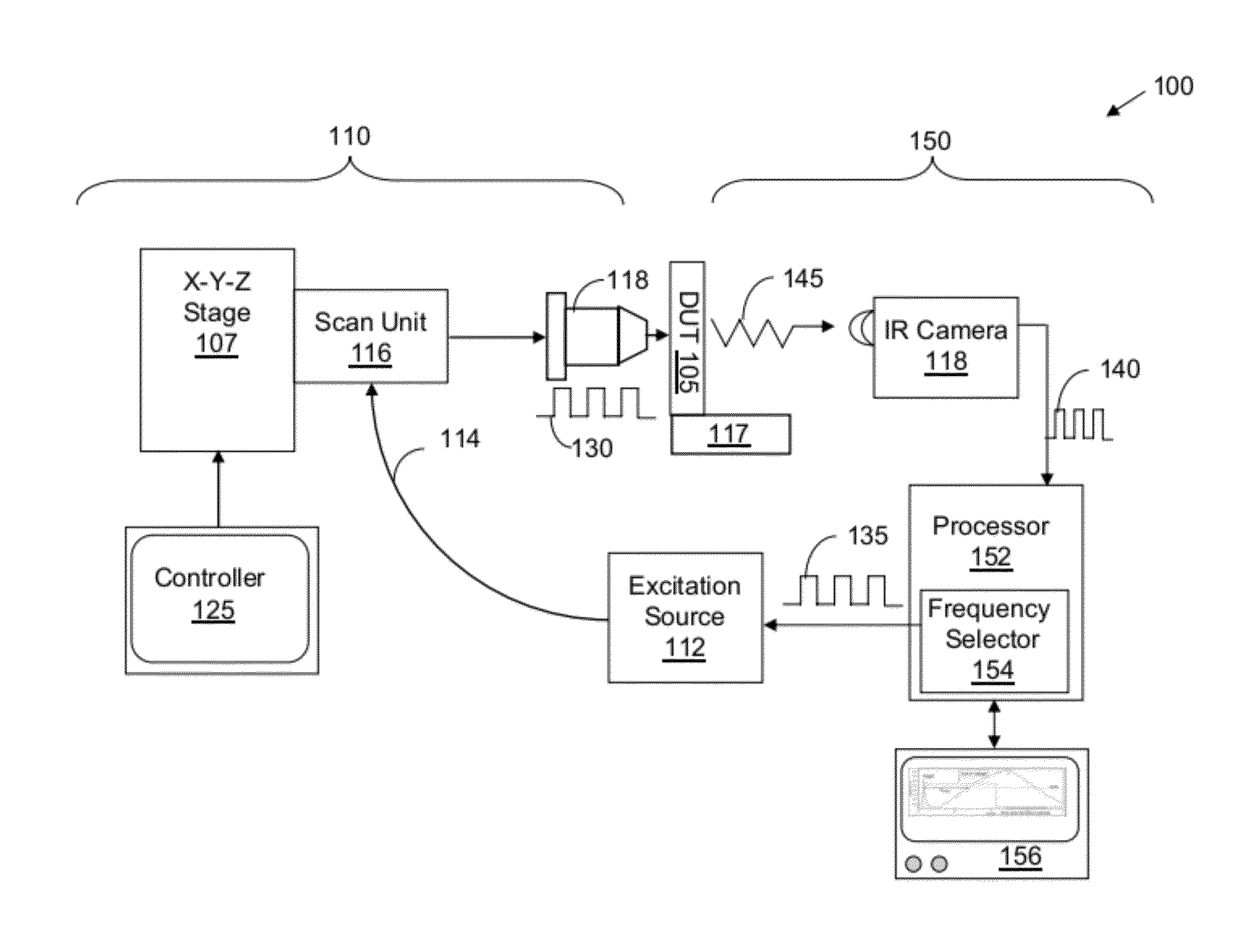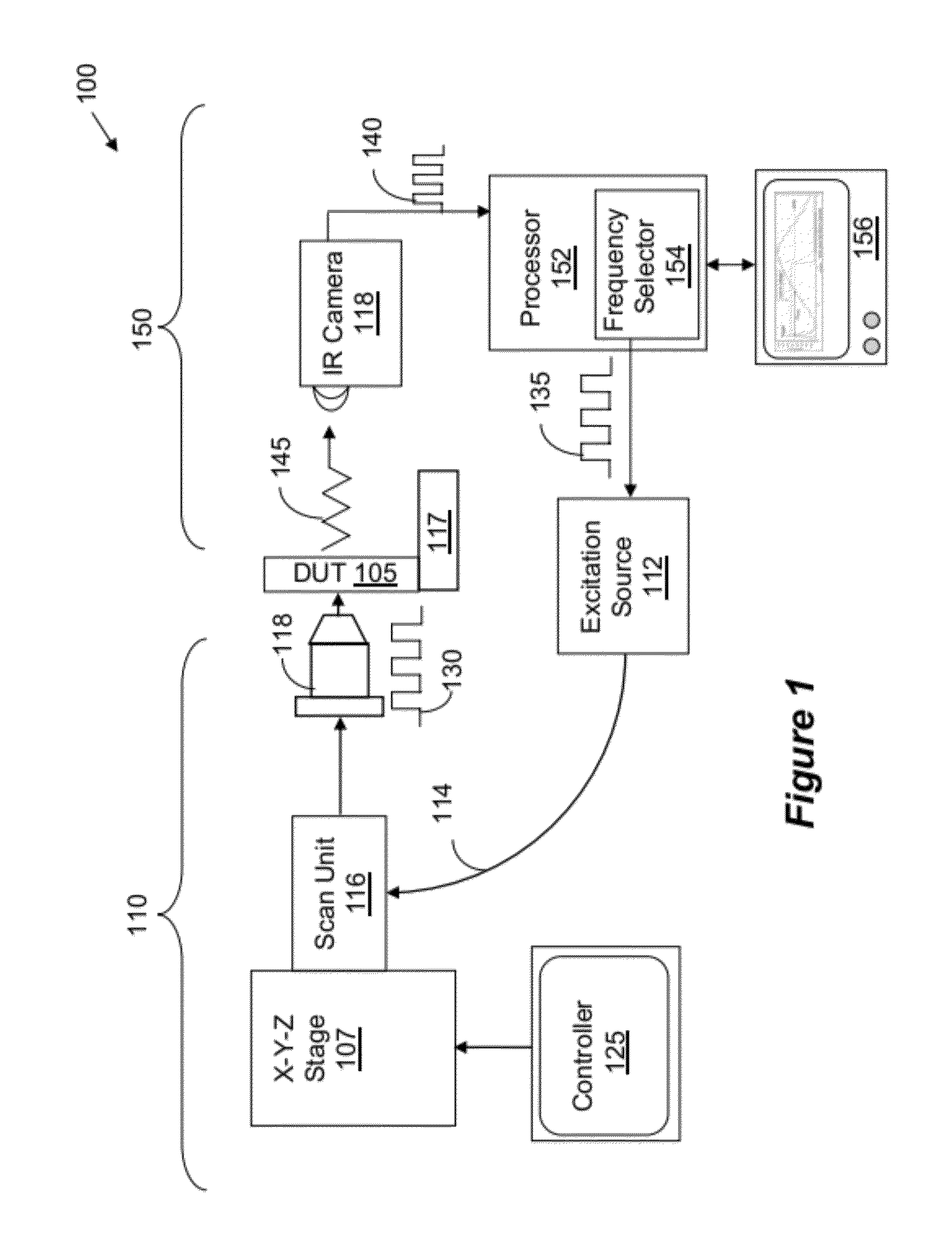Lock in thermal laser stimulation through one side of the device while acquiring lock-in thermal emission images on the opposite side
a technology of thermal laser stimulation and lock-in thermal emission, which is applied in the field of defect localization analysis of semiconductor devices, can solve the problems of difficult to evenly fill the device with conductive material, difficult to test the device using traditional techniques, and localized heating of the chip
- Summary
- Abstract
- Description
- Claims
- Application Information
AI Technical Summary
Problems solved by technology
Method used
Image
Examples
Embodiment Construction
[0018]Embodiments of this invention enable thermal defect analysis using a micrometer spot size heat source and create calibration methods for IC's and stacked dies analysis. According to embodiments of the invention, light source, such as laser, laser diode, etc., is used to generate local heating inside the die. The local heating is studied using, e.g., thermal emission image acquisition from the opposite side of the die.
[0019]According to embodiments of the invention, the lock in thermal laser stimulation is combined along with the lock in thermal emission to study the IC design. One technique works from one side of the device and the other technique from the opposite side simultaneously and synchronously.
[0020]According to one embodiment, laser pulses (e.g., 1340 nm wavelength or any wavelength above 1064 nm, which is the silicon bandgap) are directed at a given location of the IC at a given lock-in frequency, thereby causing localized heating inside the IC. The optical system, ...
PUM
 Login to View More
Login to View More Abstract
Description
Claims
Application Information
 Login to View More
Login to View More - R&D
- Intellectual Property
- Life Sciences
- Materials
- Tech Scout
- Unparalleled Data Quality
- Higher Quality Content
- 60% Fewer Hallucinations
Browse by: Latest US Patents, China's latest patents, Technical Efficacy Thesaurus, Application Domain, Technology Topic, Popular Technical Reports.
© 2025 PatSnap. All rights reserved.Legal|Privacy policy|Modern Slavery Act Transparency Statement|Sitemap|About US| Contact US: help@patsnap.com



